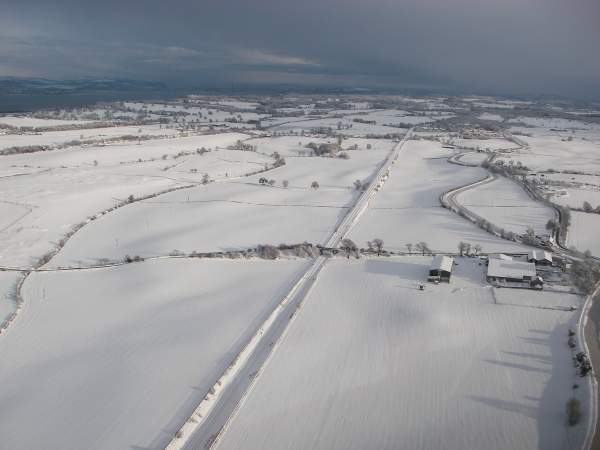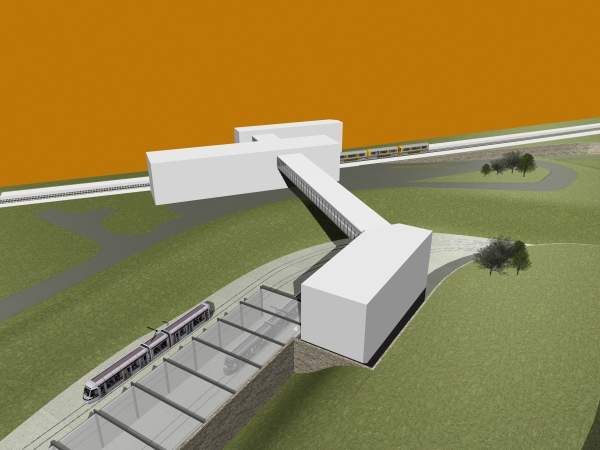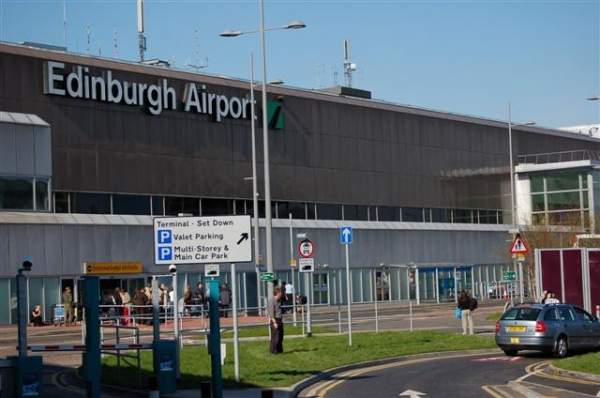Edinburgh-Glasgow Improvement Programme (EGIP) is a set of enhancement works being carried out on the Edinburgh to Glasgow rail corridor. EGIP is the single largest rail improvement programme in Scotland to date. These improvements will contribute to the long term economic sustainability of Scotland.
The £741.5m improvement programme will increase today’s five or six services an hour with the fastest journey time of 50 minutes to 13 services each hour with the fastest journey time of around 35 minutes.
The EGIP will include 150km of single-track electric railway, modernisation of the Cumbernauld, Haymarket and Queen Street stations, and construction of the new Edinburgh Gateway Station and a new electric depot at Millerhill. It will also include platform extensions at Linlithgow, Polmont, Falkirk High and Croy Stations.
The construction of the EGIP started in 2012 and is expected to be completed by 2016.
EGIP project details
EGIP is a part of the Strategic Transport Projects Review (STPR) study recommending a package of interventions to the current rail services in Scotland between 2012 and 2022.
The programme will enhance connections and service levels, as well as reduce travel times between Edinburgh and Glasgow via all routes. It will benefit the riders travelling to and from Alloa, Dunblane and Stirling.
The corridor stretches approximately 42 miles between Edinburgh and Glasgow. It continues mostly through the region in Central Scotland and includes the East Dunbartonshire, North Lanarkshire, South Lanarkshire, Falkirk and West Lothian areas. It serves major towns such as Motherwell, Cumbernauld, Falkirk and Livingston.
EGIP was unveiled to the public only in June 2011 although the development began in 2007. It is the largest building package in phased improvements in the central Scotland rail corridor. It will be financed by Transport Scotland and implemented by Network Rail.
Infrastructure
The EGIP will involve construction of a new railway station between Edinburgh and Fife. The rail / tram interchange station at Gogar will be integrated with the new Edinburgh Tram network for creating an onward connection to Edinburgh Airport. The project will thus improve public transport access to the airport and the surrounding business development area.
The existing station at Haymarket has been replaced with a modern £25m station to provide a superior interchange with the existing bus network, the new Edinburgh Tram network and local taxi services.
The upgrade will also increase the passenger capacity and make the station fully compliant with the regulations of the Disability Discrimination Act (DDA).
The additional capacity provided for Fife and the North East of Scotland will allow the operator to deliver improved services.
The improvement programme will also involve the construction of bridges, new junctions, turn-backs, interchange stations and stabling facilities. Network Rail awarded a £27m bridgeworks contract to BAM Nuttall in December 2011, as part of which work has been completed on 42 bridges.
The project will electrify the 350km route from Edinburgh to Glasgow via Falkirk and linked diversionary routes. The routes north of the Carmuirs area to Dunblane and Alloa will also be electrified.
Electrification of these routes will not only reduce journey time but also allow the Scottish Government to meet its sustainability targets. The first contract for the electrification of Edinburgh’s Haymarket north tunnel was awarded to Carillion in August 2010.
Network Rail awarded alliancing contracts worth £250m to Costain and Morgan Sindall in November 2014 for the electrification of the main Edinburgh-Glasgow route, via Falkirk High, route clearance works at Winchburgh Tunnel, rail infrastructure works at Glasgow Queen Street and Edinburgh Waverley Stations and extensions to intermediate platforms at Croy, Falkirk High, Polmont and Linlithgow.
The £2.3m Carseview Bridge was opened to public in March 2013. The upgraded Cumbernauld Station was officially opened in July 2014 and reconstruction of the Redding Road Bridge was completed in September 2014.
A new £1m Hope Street Bridge in Falkirk was opened in October 2013. A £25m platform extension work was carried out at the Waverley Station during the same time to extend the existing platforms five and six and create two new platforms from the space previously used by the taxi rank.
Additionally, Platform 12 will be extended to introduce eight carriage sets upon completion of the EGIP.
The rail bridge in Larbert was re-opened to public in December 2014.
Rolling stock
The electrified routes under EGIP will be introduced with a new fleet of electric multiple units (EMUs). Each unit will have three/four cars and be operated with six-car formations during peak times.
Abellio was appointed as the new ScotRail franchise by Transport Scotland in October 2014. Hitachi Rail Europe will deliver Abellio with new rolling stock of 70 AT200 electric multiple units (EMUs), including 46 three-car trains and 24 four-car trains, to start operations on the newly electrified Edinburgh-Glasgow line as well as on the Stirling – Alloa – Dunblane lines.






